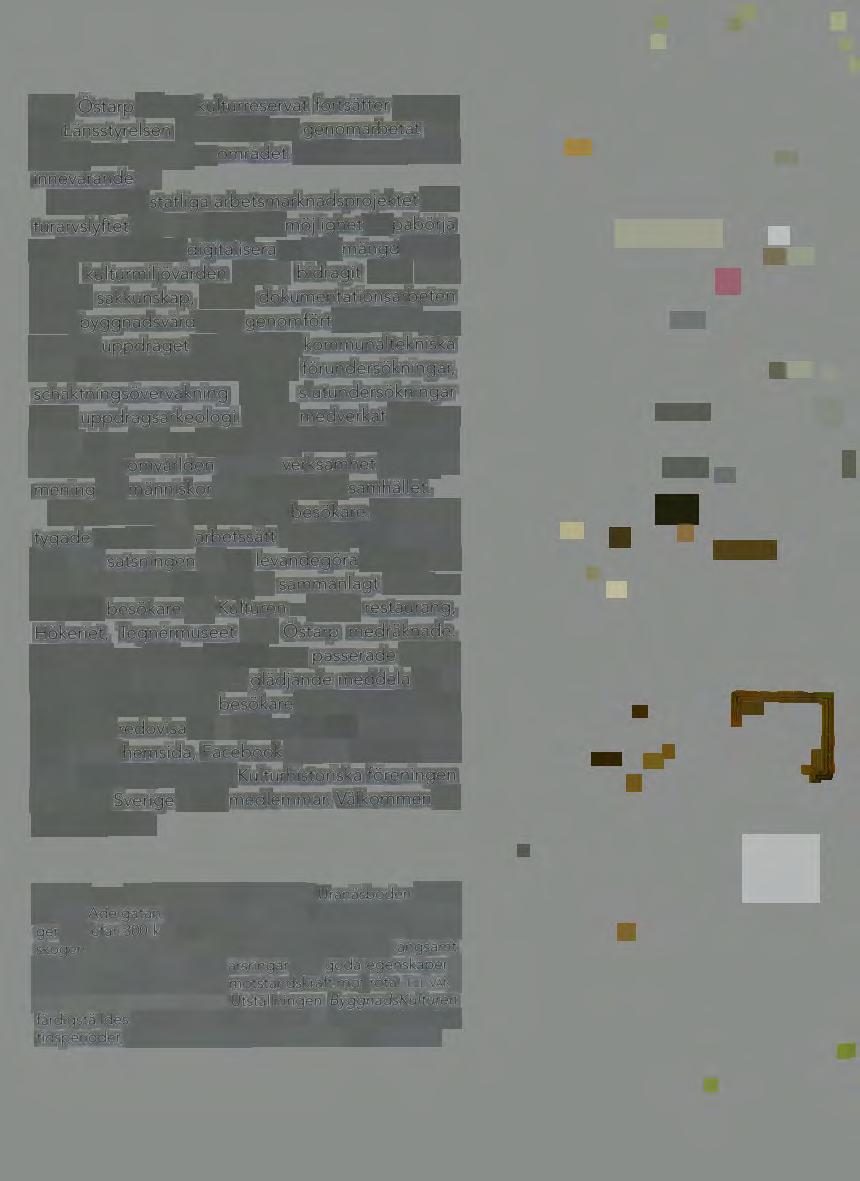
14 minute read
SUMMARIES IN ENGLISH
by Kulturen
göra Östarp till ett kulturreservat fortsätter genom att Länsstyrelsen Skåne fått ett genomarbetat underlag samt visning av området. Beslut väntas under innevarande år.
Genom det statliga arbetsmarknadsprojektet Kulturarvslyftet har vi via Regis fått möjlighet att påbörja ett arbete med att digitalisera en stor mängd bilder. Inom kulturmiljövården har vi bidragit med antikvarisk sakkunskap, utfört dokumentationsarbeten inom byggnadsvård samt genomfört och skrivit rapport för uppdraget att inventera kommunaltekniska verk. Vi har också arbetat med förundersökningar, schaktningsövervakning samt slutundersökningar inom uppdragsarkeologi. Vi har medverkat med artiklar i en ny bok om Dalby kyrka. Genom den dialog vi för med omvärlden via vår verksamhet skapar vi mening för människor och därmed för samhället.
Under året har vi ökat antalet besökare. Vi är övertygade om att vårt arbetssätt i dialog med omvärlden och satsningen på att levandegöra museet har gett resultat. Ar 2012 tog vi sammanlagt emot ca 235 000 besökare på Kulturen - butik, restaurang, Hökeriet, Tegnermuseet och Östarp medräknade. Av dessa var det ca 83 000 som passerade entren till Kulturen i Lund. Vi kan glädjande meddela att vi därmed ökade antalet besökare med nästan 20%. Vi kan också redovisa att vi haft ca 170 000 virtuella besök på vår hemsida, Facebook och vår databas Carlotta. Vid årets slut hade Kulturhistoriska föreningen för södra Sverige 3 766 medlemmar. Välkommen till Kulturen 2013!

Stockar som ska användas till takåsar i Uranäsboden lastas av från Adelgatan. Varje stock är cirka 9 meter lång och väger ungefär 300 kg. De har fällts och bilats för hand i Kullaskogen i nordöstra Skåne. Där har träden fått växa långsamt och därmed har virket täta årsringar och goda egenskaper i form av hållbarhet och god motståndskraft. mot röta. TILL VÄNSTER NEDERST OCH TILL HÖGER: Utställningen ByggnadsKu/turen färdigställdes under året. Här visas hur vi byggt under olika tidsperioder, vilka material och vilka tekniker som använts.
BJÖRN MAGNUSSON STAAF
Power over Life
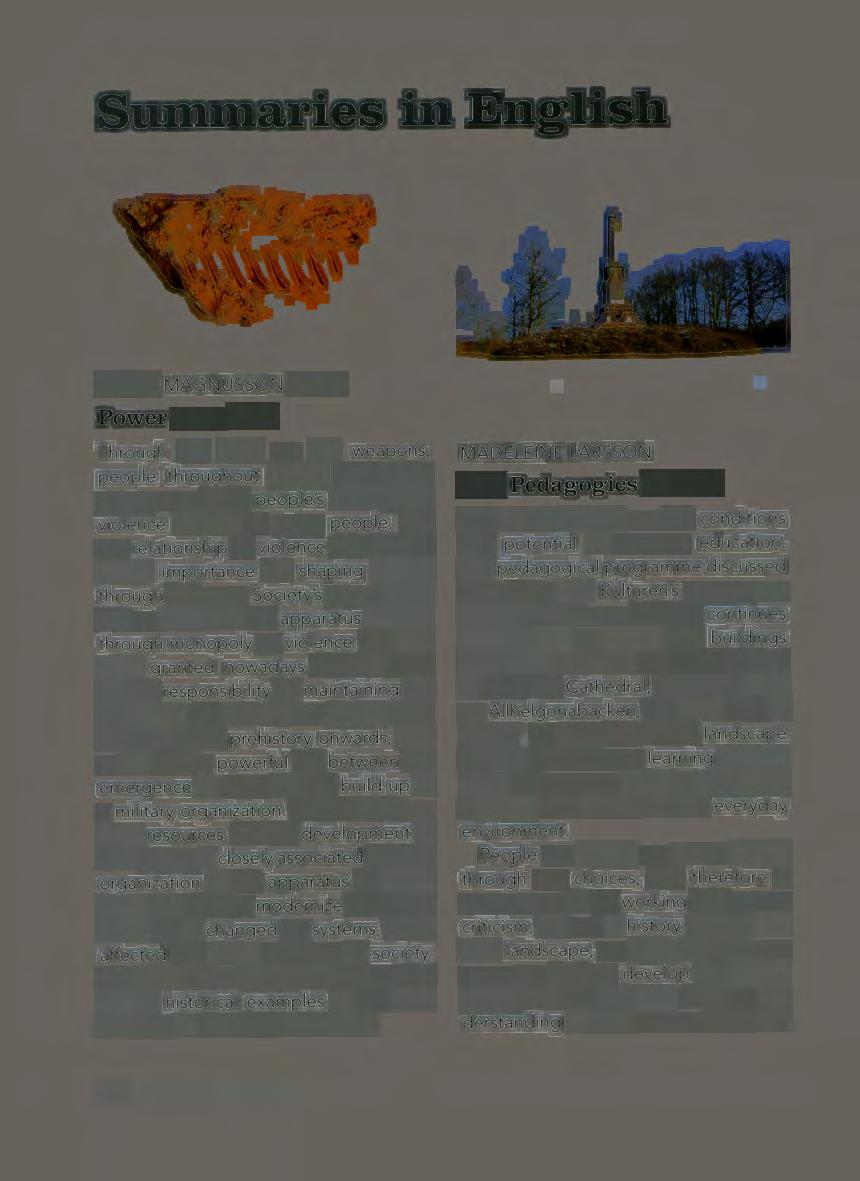
Through the tools we call weapons, people throughout history have taken power over other people's lives. Today violence is alien to many people, but our relationship to violence has been of crucial importance for shaping society through the ages. Society's power is based on control of the apparatus of force through monopoly on violence. We take it for granted nowadays that the state has the responsibility for maintaining law and order, but this has not always been the case. From prehistory onwards, there has been a powerful link between the emergence of states and the build-up of a military organization. Armed forces require resources, and the development of a tax system is closely associated with the organization of the apparatus of public force. The need to modernize the armed forces led to changed tax systems, which affected the social structure of society. This often led to unrest, and the text has several historical examples of this from the town of Lund and from Skåne.
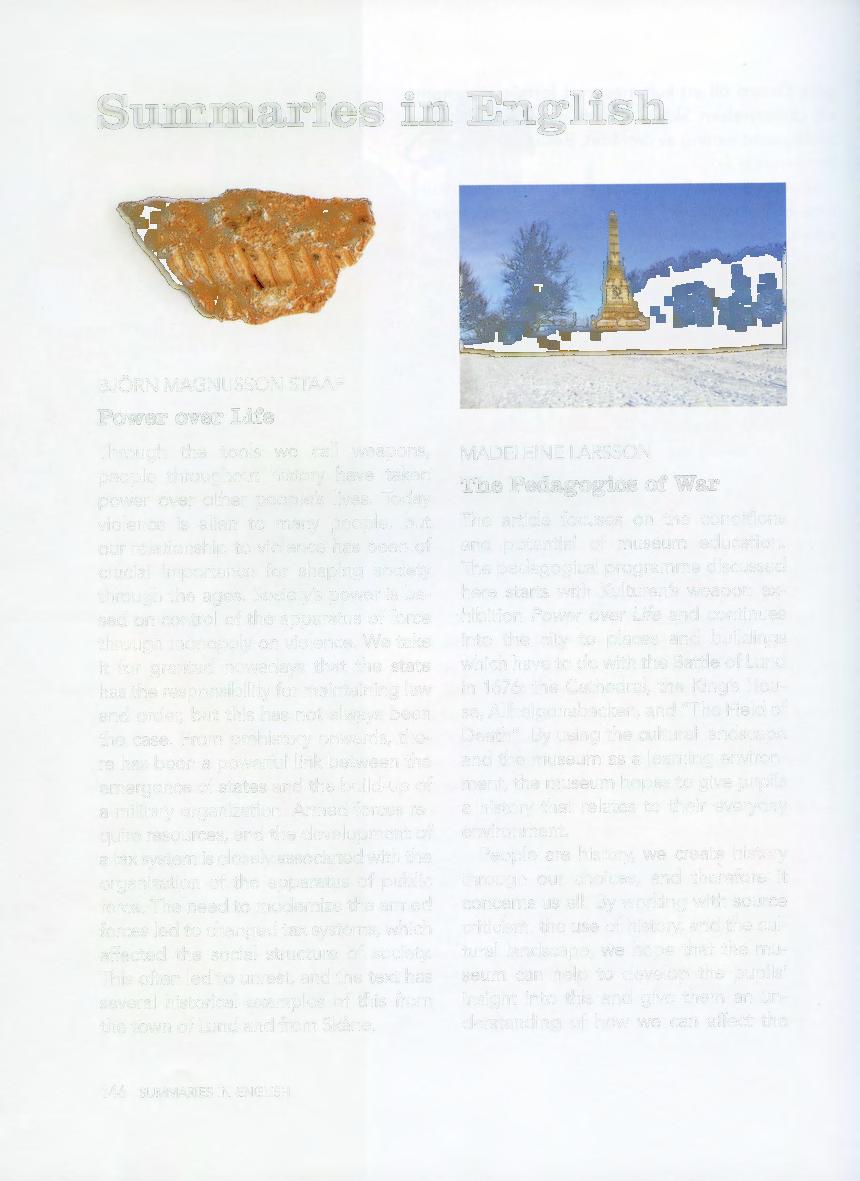
MADELEINE LARSSON
The Pedagogics of War
The article focuses on the conditions and potential of museum education. The pedagogical programme discussed here starts with Kulturen's weapon exhibition Power over Life and continues into the city to places and buildings which have to do with the Battle of Lund in 1676: the Cathedral, the King's House, Allhelgonabacken, and "The Field of Death". By using the cultural landscape and the museum as a learning environment, the museum hopes to give pupils a history that relates to their everyday environment.
People are history, we create history through our choices, and therefore it concerns us all. By working with source criticism, the use of history, and the cultural landscape, we hope that the museum can help to develop the pupils' insight into this and give them an understanding of how we can affect the
146 SUMMARIES IN ENGLISH


world around us and our fellow human beings. The aim of the subject of history is to give individuals a foundation for a greater understanding of themselves and their world. Proceeding from the exhibition "Power over Life", people's relations to weapons and war through the ages can serve as abasis fora discussion of questions of an existential, philosophical, moral, and ethical character.
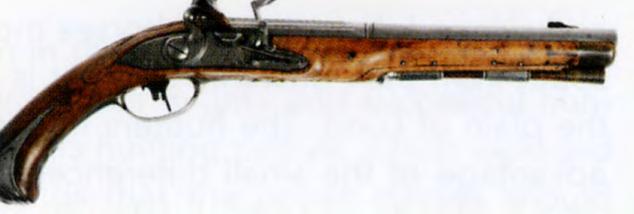
CONNY JOHANSSON HERVEN The Power of Powder
The article surveys the history of hand guns in Europe, chiefly considering the lock mechanism. Kulturen's weapons collection shows a great spanas regards both technology and chronology. The oldest example in the collections is a so-called hand cannon of bronze found in Åhus harbour and dated to the fifteenth century. With the invention of a mechanical system for firing the weapon - the lock - the marksman could concentrate on the target. In the sixteenth century the matchlock musket had its breakthrough on the battlefield, changing the rules of warfare. The start of the sixteenth century saw the invention of the wheel lock, which could make sparks and had a self-igniting function. The snaphance was a simpler and cheaper lock that was invented around 1530-40. Snaphance rifles are firmly associated with the history of Skåne. An example in Kulturen's collections comes from the parish of Glimåkra in Östra Göinge and is dated to the yea rs 1650-1700. The flintlock was simpler and more robust than the snaphance, and smooth-bore flintlock muskets became the standard weapon of all European armies for almost two hundred years, c. 1660-1840.
BJÖRN MAGNUSSON STAAF
Swords
The sword has a history going back over 4,000 years. Early swords of bronze have been found in Nordic burial mounds from the Bronze Age. The curved sabre is one of the oldest types of sword, known from around 1800 BC. Medieval swords were long and heavy, chiefly intended for dealing slashing blows. The only protection for the hand on the sword was the cross-guard. Armoured knights made up the core of European armies during the Middle Ages. At the start of the sixteenth century speed and mobility became more important, and
Summaries in English
BJÖRN MAGNUSSON STAAF
Power over Life
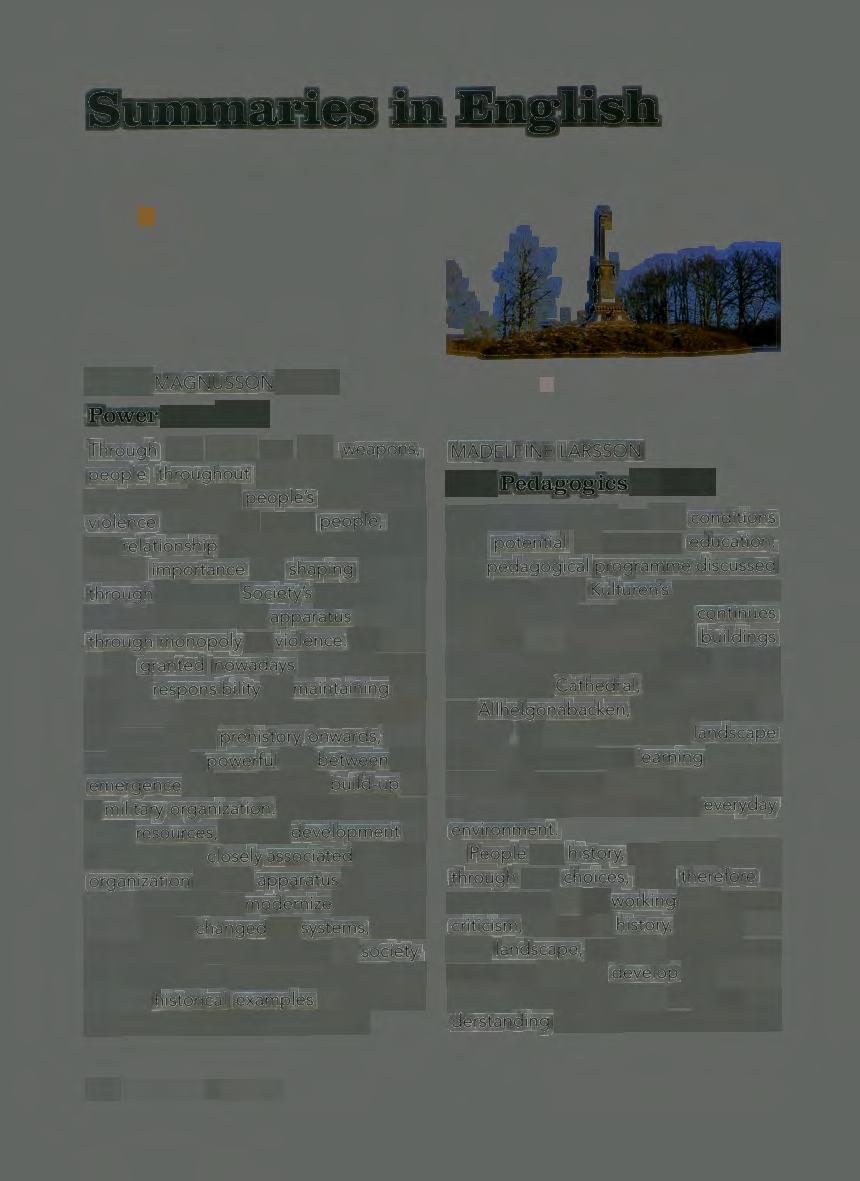
Through the tools we call weapons, people throughout history have taken power over other people's lives. Today violence is alien to many people, but our relationship to violence has been of crucial importance for shaping society through the ages. Society's power is based on control of the apparatus of force through monopoly on violence. We take it for granted nowadays that the state has the responsibility for maintaining law and order, but this has not always been the case. From prehistory onwards, there has been a powerful link between the emergence of states and the build-up of a military organization. Armed forces require resources, and the development of a tax system is closely associated with the organization of the apparatus of public force. The need to modernize the armed forces led to changed tax systems, which affected the social structure of society. This often led to unrest, and the text has several historical examples of this from the town of Lund and from Skåne.

MADELEINE LARSSON
The Pedagogics of War
The article focuses on the conditions and potential of museum education. The pedagogical programme discussed here starts with Kulturen's weapon exhibition Power over Life and continues into the city to places and buildings which have to do with the Battle of Lund in 1676: the Cathedral, the King's House, Allhelgonabacken, and "The Field of Death". By using the cultural landscape and the museum as a learning environment, the museum hopes to give pupils a history that relates to their everyday environment.
People are history, we create history through our choices, and therefore it cancerns us all. By working with source criticism, the use of history, and the cultural landscape, we hope that the museum can help to develop the pupils' insight into this and give them an understanding of how we can affect the
146 SUMMARIES IN ENGLISH
world around us and our fellow human beings. The aim of the subject of history is to give individuals a foundation for a greater understanding of themselves and their world. Proceeding from the exhibition "Power over Life", people's relations to weapons and war through the ages can serve as abasis fora discussion of questions of an existential, philosophical, moral, and ethical character.

CONNY JOHANSSON HERVEN The Power of Powder
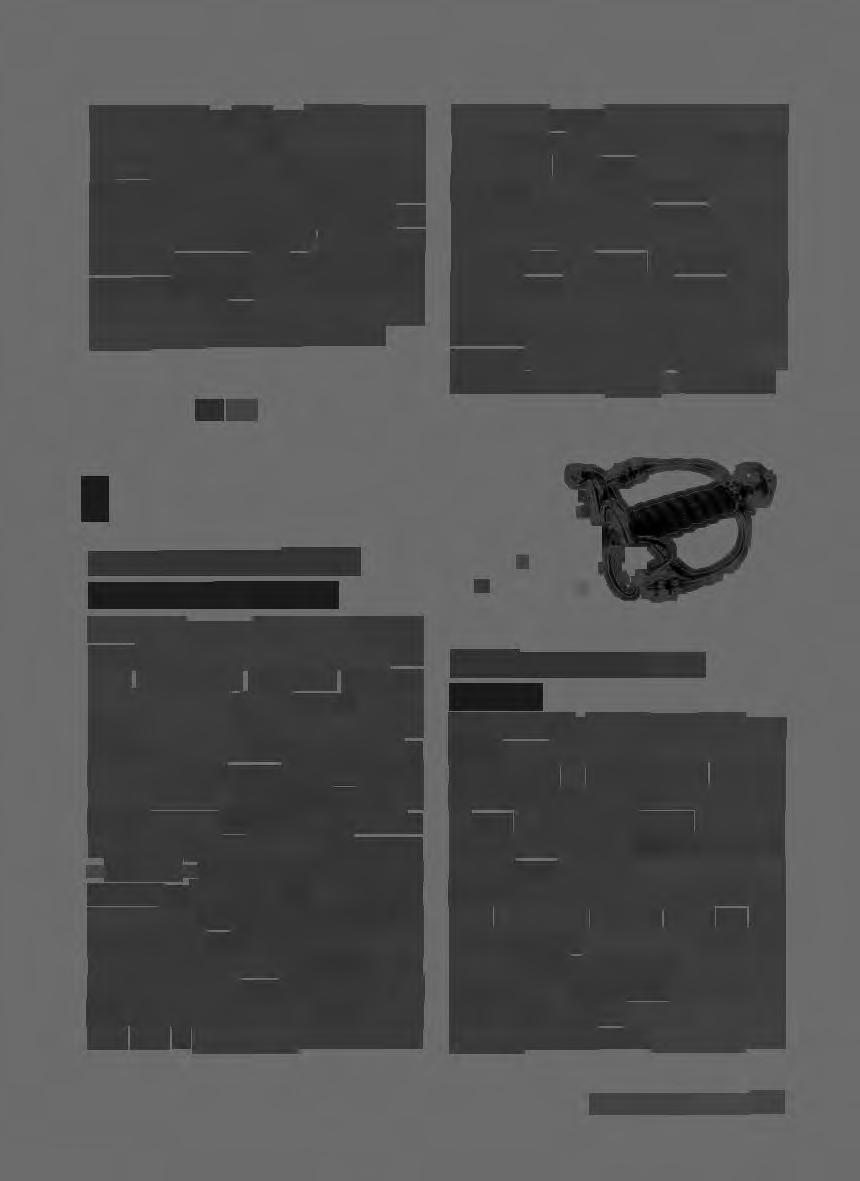

The article surveys the history of hand guns in Europe, chiefly considering the lock mechanism. Kulturen's weapons collection shows a great spanas regards both technology and chronology. The oldest example in the collections is a so-called hand cannon of bronze found in Åhus harbour and dated to the fifteenth century. With the invention of a mechanical system for firing the weapon - the lock - the marksman could concentrate on the target. In the sixteenth century the matchlock musket had its breakthrough on the battlefield, changing the rules of warfare. The start of the sixteenth century saw the invention of the wheel lock, which could make sparks and had a self-igniting function. The snaphance was a simpler and cheaper lock that was invented around 1530-40. Snaphance rifles are firmly associated with the history of Skåne. An example in Kulturen's collections comes from the parish of Glimåkra in Östra Göinge and is dated to the years 1650-1700. The flintlock was simpler and more robust than the snaphance, and smooth-bore flintlock muskets became the standard weapon of all European armies for almost two hundred years, c. 1660- 1840.
BJÖRN MAGNUSSON STAAF
Swords
The sword hasa history going back over 4,000 years. Early swords of bronze have been found in Nordic burial mounds from the Bronze Age. The curved sabre is one of the oldest types of sword, known from around 1800 BC. Medieval swords were long and heavy, chiefly intended for dealing slashing blows. The only protection for the hand on the sword was the cross-guard. Armoured knights made up the core of European armies during the Middle Ages. At the start of the sixteenth century speed and mobility became more important, and
the lighter rapier was developed. The rapier was used as much for thrusting as for slashing, and in the seventeenth century rapier hilts were given increasingly complicated forms. In Kulturen's collections there are many examples of magnificent rapiers. The collections also include a rapier associated with an officer from Skåne who ended up in Russian captivity after the Battle of Poltava in 1709. Battle formations changed once again under Napoleon. The bayonet became the most important weapon for close combat, but the sabre, which was intended for slashing rather than thrusting, was also used. After the Napoleonic Wars the sword no longer had the crucial part to play in warfare that it had had for thousands of years, and it disappeared from the battlefield.
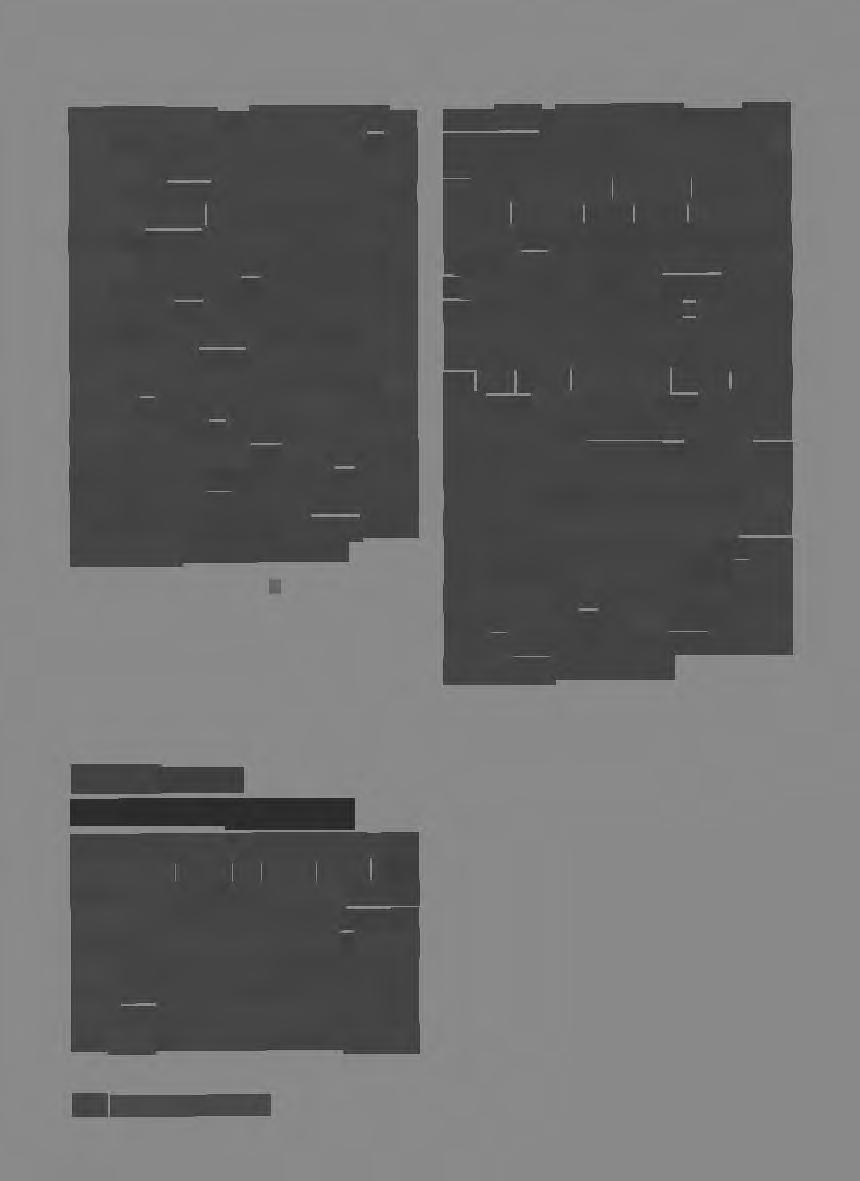
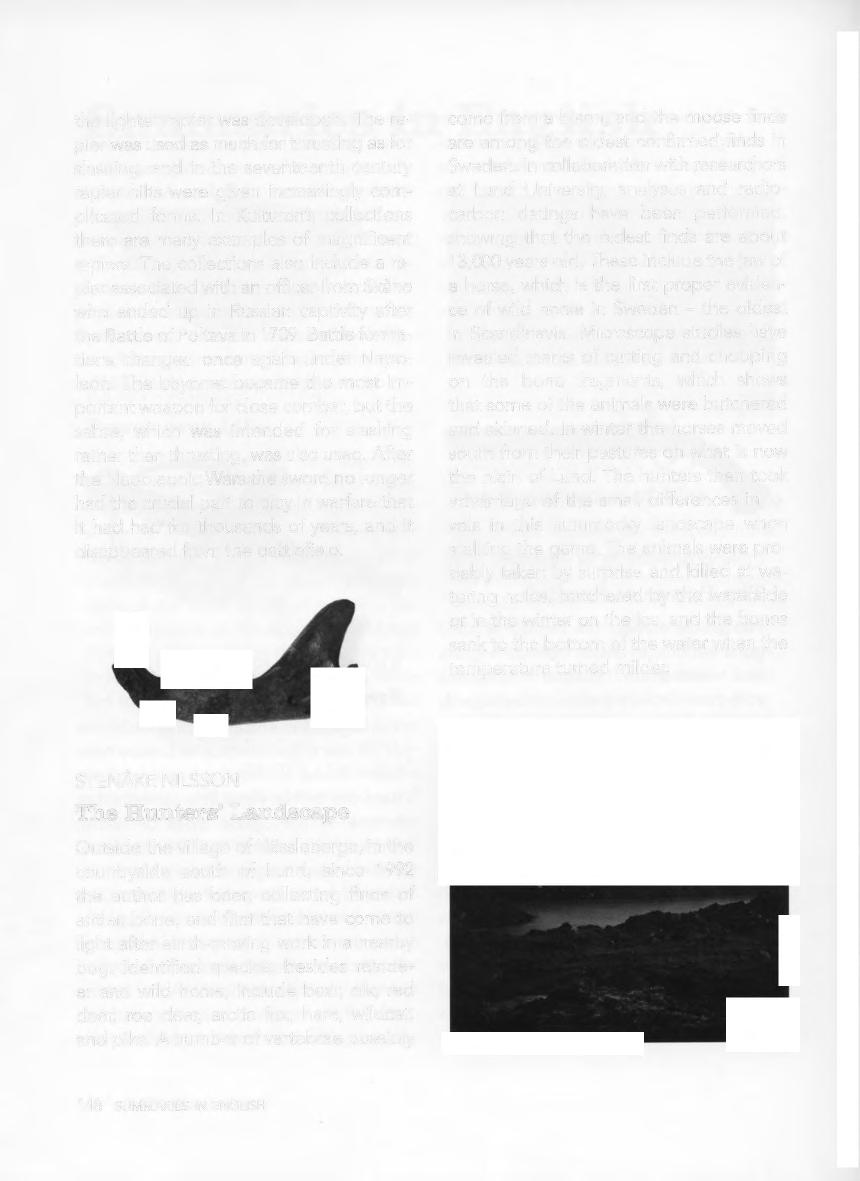
STENÅKE NILSSON
The Hunters' Landscape
Outside the village of Hässleberga, in the countryside south of Lund, since 1992 the author has been collecting finds of antler, bone, and flint that have come to light after earth-moving work in a nearby bog. ldentified species, besides reindeer and wild horse, include bear, elk, red deer, roe deer, arctic fox, hare, wildcat, and pike. A number of vertebrae possibly come from a bison, and the moose finds are among the oldest confirmed finds in Sweden. In collaboration with researchers at Lund ·University, analyses and radiocarbon datings have been performed, showing that the oldest finds are about 13,000 years old. These include the jaw of a horse, which is the first proper evidence of wild horse in Sweden - the oldest in Scandinavia. Microscope studies have revealed marks of cutting and chopping on the bone fragments, which shows that some of the animals were butchered and skinned. In winter the horses moved south from their pastures on what is now the plain of Lund. The hunters then took advantage of the small differences in levels in this hummocky landscape when stalking the game. The an i mals were probably taken by surprise and killed at watering holes, butchered by the waterside or in the winter on the ice, and the bones sank to the bottom of the water when the temperature turned milder.
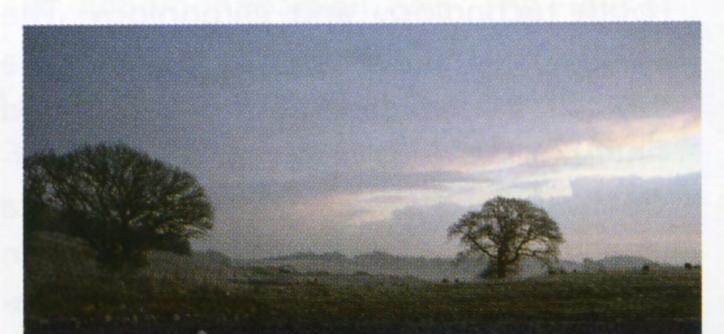
ULF NYREN
Hunting Rights in 'I\vo Different Worlds
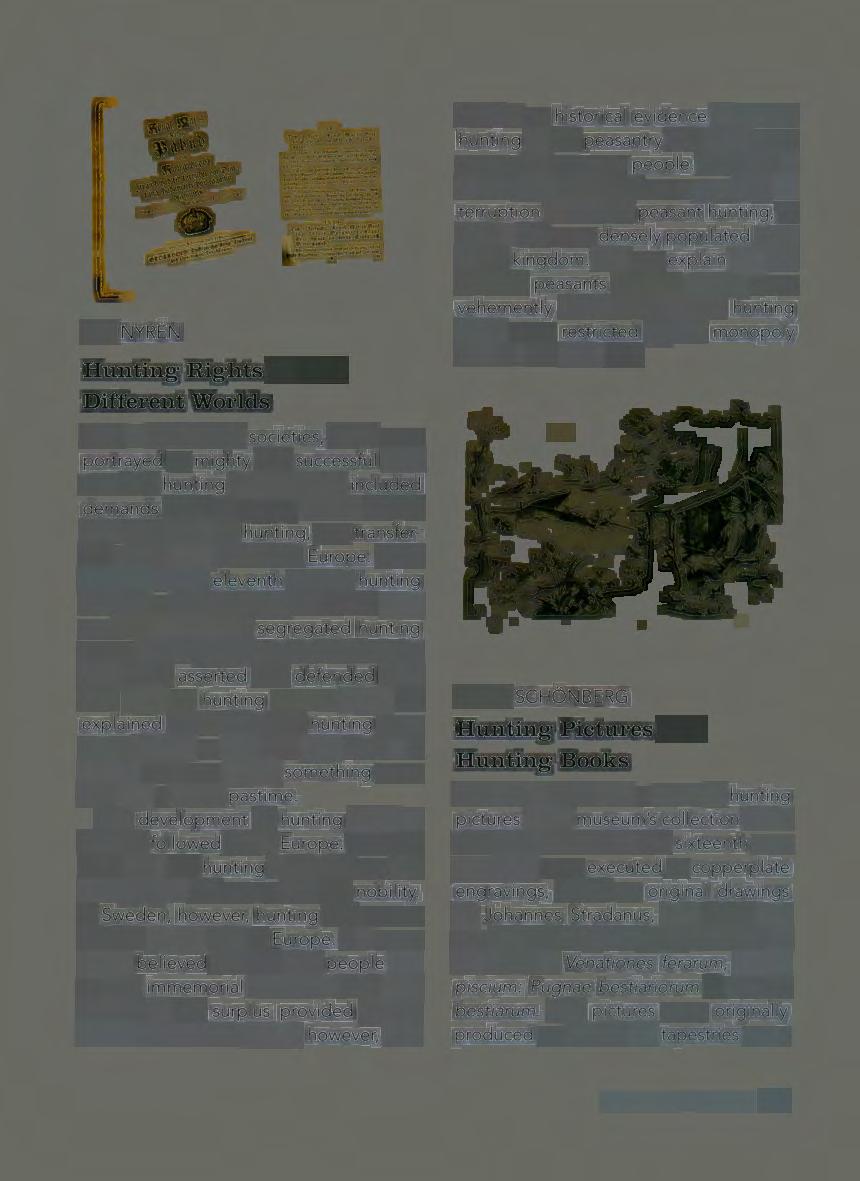
Even in the earliest societies, rulers were portrayed as mighty and successful hunters. This hunting culture, which included demands that the upper classes should have sole rights to hunting, was transferred to the royal houses of Europe. From the end of the eleventh century hunting became a natural hobby for feudal princes and nobles, and segregated hunting teams would persist into modern times. Why elites asserted and defended their sole right to hunting cannot solely be explained by the fact that hunting gave meat, leather, or furs. The royal hunt in a warrior state was always something more than justa leisure pastime.
The development of hunting rights in Sweden followed that in Europe. Between 1647 and 1789 hunting in Sweden was the sole right of the crown and the nobility. In Sweden, however, hunting had a more divided history than in Europe. It is commonly believed that the rural people since time immemorial could take.what they wanted of the surplus provided by the forests. The author shows, however, that there is no historical evidence of ancient hunting by the peasantry with deep roots among the common people. That view is of late date, and there was a very long interruption in Swedish peasant hunting, at least in the more densely populated parts of the kingdom. This can explain why the Swedish peasants did not protest more vehemently when their ancient hunting rights were restricted by the monopoly laws of 1647 and 1664.
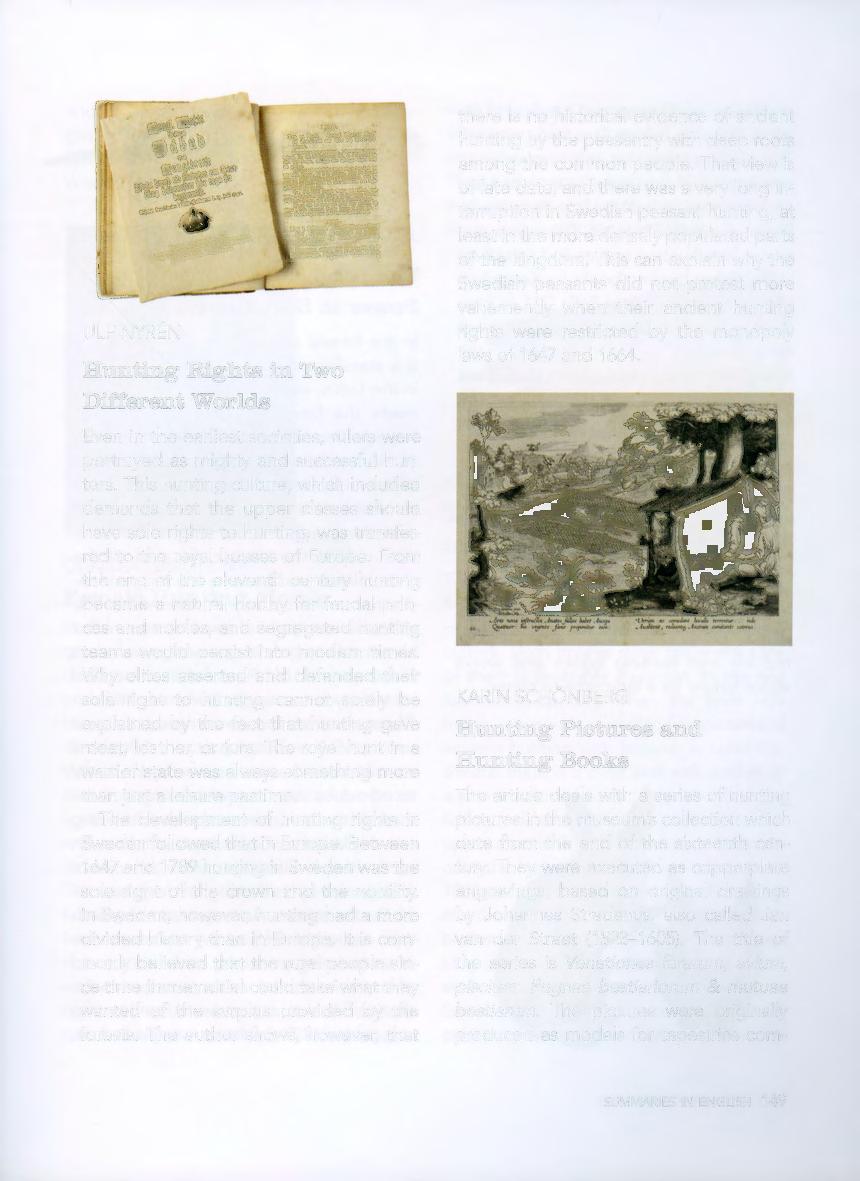
KARIN SCHÖNBERG
Hunting Pictures and Hunting Books
The article deals with a series of hunting pictures in the museum's collection which date from the end of the sixteenth century. They were executed as copperplate engravings, based on original drawings by Johannes Stradanus, also called Jan van der Straet (1523-1605). The title of the series is Venationes ferarum, avium, piscium: Pugnae bestiariorum & mutuae
bestiarum. The pictures were originally produced as models for tapestries com-
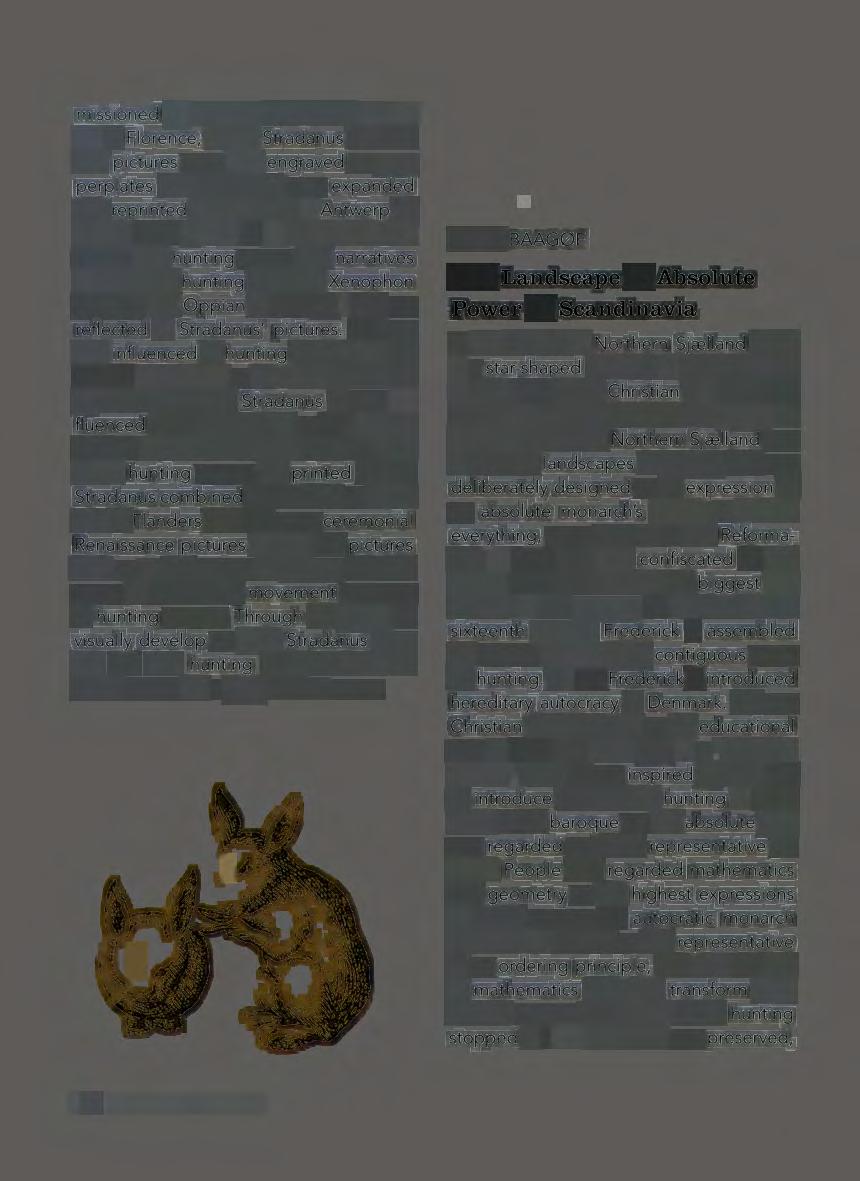
missioned by Cosimo de' Medici (151974) in Florence, where Stradanus worked. The pictures were also engraved on copperplates and the series was expanded and reprinted several times in Antwerp by Philips Galle (1537-1612). The article discusses how hunting scenes and narratives in the oldest hunting books by Xenophon (400 BC) and Oppian of Pella (211 AD) are reflected in Stradanus' pictures. He was also influenced by hunting books from the Middle Ages, such as the Livre de Chasse by Gaston Phebus. Stradanus in tum influenced other artists such as the painter Rubens with his lion hunts and Jost Amman's hunting scenes for printed books. Stradanus combined the realistic art tradition of Flanders with the more ceremonial Renaissance pictures of ltaly. His pictures take us to the centre of events, and the sense of drama and mo,vement was new in hunting scenes. Through his ability to visually develop an idea, Stradanus poured life into hunting books and works about nature fora long time to come. JETIE BAAG0E
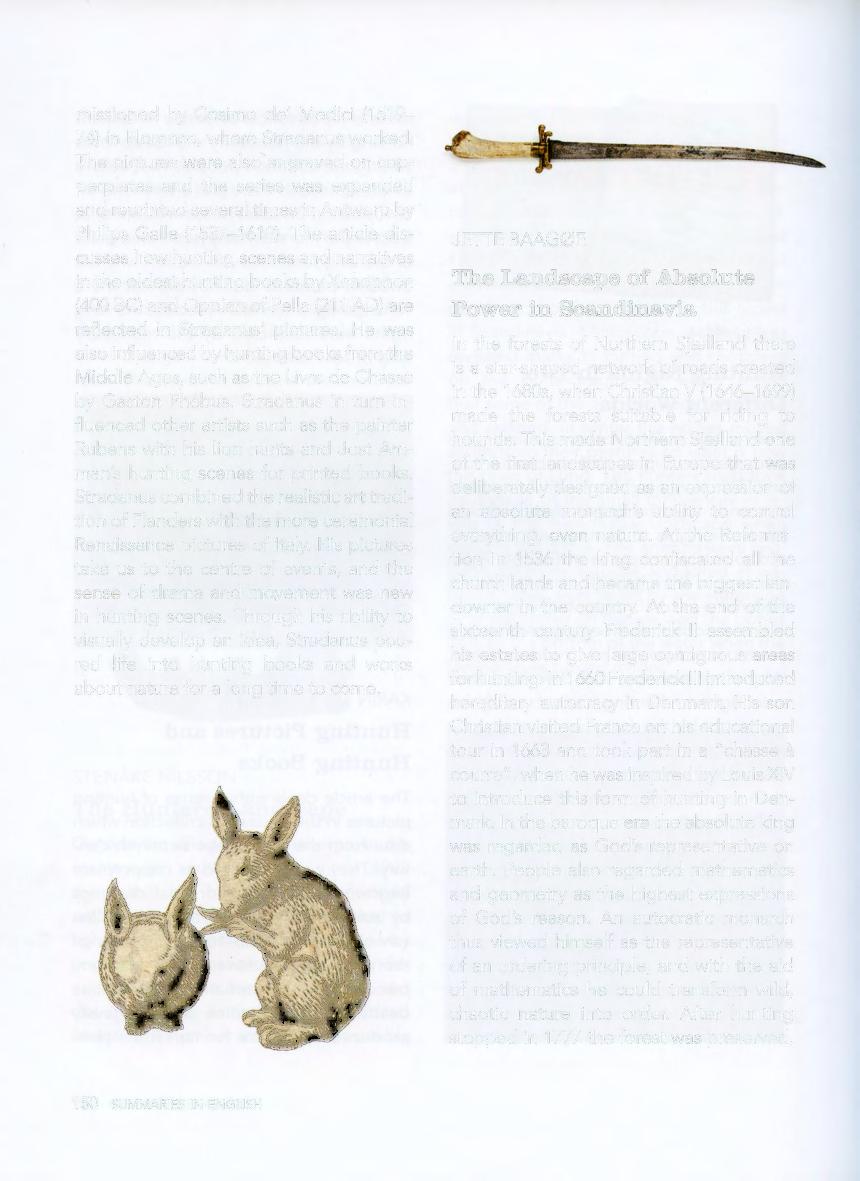
The Landscape of Absolute Power in Scandinavia
In the forests of Northern there is a star-shaped network of roads created in the 1680s, when Christian V (1646-1699) made the forests suitable for riding to hounds. This made Northern one of the first landscapes in Europe that was deliberately designed as an expression of an absolute monarch's ability to control everything, even nature. At the Reformation in 1536 the king confiscated all the church lands and became the biggest landowner in the country. At the end of the sixteenth century Frederick Il assembled his estates to give large contiguous areas for hunting. In 1660 Frederick 111 introduced hereditary autocracy in Denmark. His son Christian visited France on his educational tour in 1663 and took part in a "chasse a courre", when he was inspired by Louis XIV to introduce this form of hunting in Denmark. In the baroque era the absolute king was regarded as God's representative on earth. People also regarded mathematics and geometry as the highest expressions of God's reason. An autocratic monarch thus viewed himself as the representative of an ordering principle, and with the aid of mathematics he could transform wild chaotic nature into order. After stopped in 1777 the forest was preserved,










